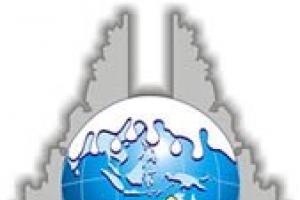Since 2003, New Zealand's Scion has been carrying out a field trial planting of genetically engineered (GE) Radiata pine and Norway spruce trees at its research facilities in Rotorua. The GE trees contain reporter genes, herbicide resistance genes and genes which according to Scion are "thought to affect floral development". The trial is planned to last 22 years, although none of the trees will be left in the ground for more than 10 years.
The Green Economy
The Green Economy is a tactic used to “clean up” the image of corporations rather than address corporate capture and capitalism as the true drivers of deforestation. False solutions promoted under the Green Economy include certification, sustainable forest management, ecosystem services, REDD+, the bioeconomy, nature-based climate solutions, and zero net deforestation. Rather than stopping it, these “solutions” support corporate-driven destruction that is causing a deep social and ecological crisis.
Declarations
10 December 2007
United Nations Framework Convention on Climate Change COP 13 Bali, Indonesia, December 2007
Governments meeting in Bali, Indonesia for the 13th Conference of the Parties/3rd Meeting of the Parties to the United Nations’ Framework Convention on Climate Change (UNFCCC), 3-14 December 2007, need to recognise that this may be our last opportunity to stop runaway climate change and that with 18-20% of annual carbon emissions being caused by deforestation, protecting our forests is a key part of this.
Bulletin articles
5 December 2007
Most Chilean forestry companies’ plantations are certified, some by FSC and the majority by CERTFOR (a member of PEFC). In round figures, FSC has certified some 350,000 hectares, while CERTFOR has certified approximately 1,600,000 hectares. Given the importance of CERTFOR in Chile, it interesting to analyze it in greater detail.
Bulletin articles
5 December 2007
European politicians want to validate the accelerated introduction of agrofuels into the EU countries establishing supposedly sustainable criteria. However, before making full assessments, consulting with the populations involved and establishing these criteria, the obligatory objectives or percentages of agrofuels to be mixed with fossil fuels have already been fixed. The percentages are so high (5.75% until 2010 and 10% until 2020) that many analyses claim that they are impossible to attain.
Bulletin articles
8 November 2007
In 1992, governments acknowledged that climate change was real and that something needed to be done to avoid a major catastrophe. As a result, they signed and ratified the United Nations Framework Convention on Climate Change (UNFCCC). Fifteen years have passed and the Convention’s Conference of the Parties will meet for its 13th time in Bali, Indonesia, from 3-14 December 2007.
Bulletin articles
8 November 2007
The present expansion of monoculture tree plantations has not happened by chance or just because some governments got this idea. On the contrary, it is the result of the action of a group of actors that set out to promote such plantations.
In the fifties, the FAO became the main ideologist behind the large scale monoculture eucalyptus and pine plantation model in the South (as part of the so-called Green Revolution, promoted by this organization), as a response to the needs of large industrial companies that were exhausting their traditional sources of raw material.
Bulletin articles
8 November 2007
Over the last two years, Laos has seen a dramatic increase in foreign direct investment for commercial tree plantations. The Lao Committee for Planning and Investment shows 21 projects worth US$17.3 million value were approved in 2005, which rose to 39 projects approved with a value of US$458.5 million in 2006 and by February 2007, 9 projects had been approved and 16 were pending, with a total value of US$342 million.
Bulletin articles
8 November 2007
A short while ago on the international tourist scale, Tasmania was voted the second most beautiful location to visit in the world. It has spectacular mountains and ancient forests, pristine beaches, an abundance of unique wildlife, a cool temperate climate and a low population.
Much of this has been declared World Heritage and there are walking and hiking trails that are breathtakingly beautiful. Despite its small size, it also has some of the best farmland in Australia enjoying a generally good rainfall, and is proud of its 'clean, green image'.
Other information
17 October 2007
Between 2001 and 2005, plywood panels manufactured by Pizano S.A., one of the largest timber companies in Colombia, could be purchased in the U.S. The panel was manufactured in part using timber from one of the plantations certified by Forest Stewardship Council (FSC), and in part from the natural forests in northeast Colombia, forests in which guerrilla organizations, paramilitary groups and the army fight for control of the territory and its natural resources. Consequently, these plywood panels were stained with blood.
Other information
17 September 2007
Press Release - September 17 - 2007
Bulletin articles
17 September 2007
Three years ago, in response to an article I wrote about the pulp industry's involvement in research into genetically modified (GM) trees, I received an email from the FSC Secretariat in Oaxaca, Mexico.
"I assume you are aware," read the email, "that the only forest certification scheme that has a clear position against GM trees is the FSC scheme, and that this issue is particularly relevant to large plantation companies that have the resources to invest in this kind of research and development."
Bulletin articles
18 August 2007
For over a decade WRM has been gathering, producing and disseminating information and analysis on the social and environmental impacts of fast wood plantations, characterized as large-scale, fast-growth tree monocultures. At the same time, we have been stressing that such plantations should not be certified, focusing on the Forest Stewardship Council (FSC), this being the scheme certifying most of such plantations.


